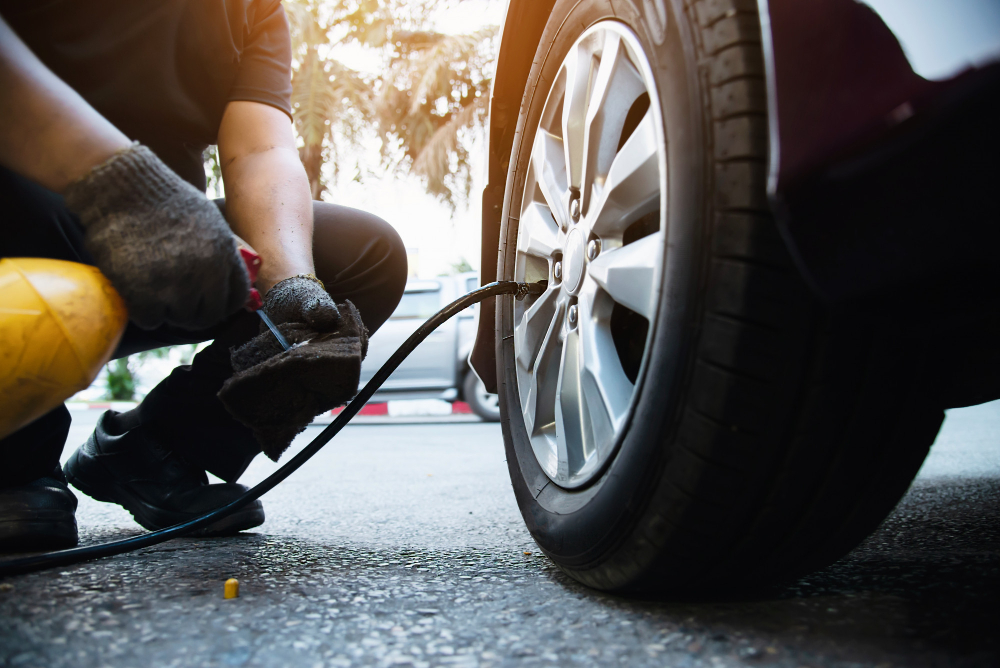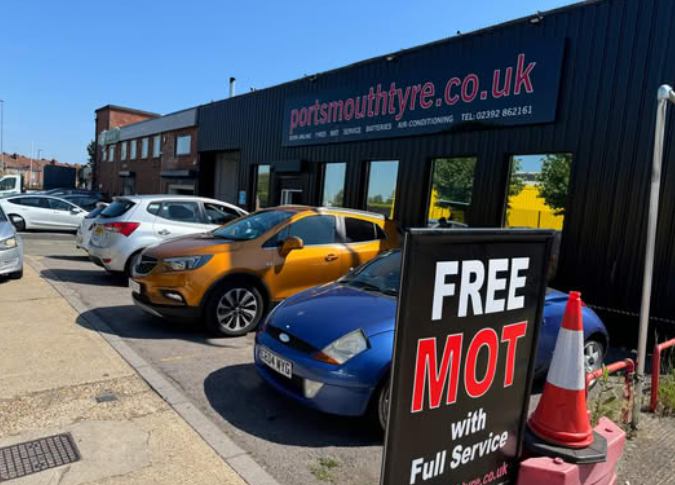Keeping your tyres in good condition is one of the most important parts of safe driving. But no matter how careful you are, punctures can and do happen. Whether it’s a sharp nail, a piece of glass, or simply worn tread, a damaged tyre needs urgent attention.
In this guide, we’ll cover everything UK drivers need to know about tyre puncture repairs, including when a repair is possible, how much it costs, and why sometimes a replacement tyre is the safest option.
Why Tyre Puncture Repairs Matter
Tyres are the only part of your car that makes contact with the road. Driving on a damaged or flat tyre can cause:
-
Loss of control – reduced grip and handling
-
Increased stopping distances – especially in wet conditions
-
Further damage – to the wheel rim and suspension
-
Legal issues – UK law requires tyres to be roadworthy with a minimum tread depth of 1.6mm
A puncture repair is often a quick, cost-effective solution – but only when the damage meets strict safety standards.
Can Every Tyre Be Repaired?
Not all punctures can be safely repaired. In the UK, garages follow British Standard BSAU159, which sets out the rules for safe puncture repairs. According to this standard:
-
Repairable punctures are usually in the central tread area (not the sidewall).
-
The hole must be less than 6mm in diameter.
-
Tyres must not have secondary damage (bulges, exposed cords, run-flat damage).
-
Sidewall damage cannot be repaired safely.
-
If a tyre has already been repaired multiple times, a new tyre may be safer.
How Do Garages Repair a Punctured Tyre?
Professional puncture repairs are much more reliable than temporary DIY kits. The process usually involves:
-
Inspection – The tyre is removed from the wheel and checked inside and out.
-
Cleaning & preparation – The puncture site is cleaned for a secure repair.
-
Patch or plug fitting – A special plug-patch is installed to seal the hole from the inside.
-
Rebalancing & refitting – The tyre is remounted, inflated, and balanced for safety.
This process ensures the tyre is safe, airtight, and road-legal again.
When Should You Replace Instead of Repair?
While repairs are cheaper, sometimes a new tyre is the safest choice. Replacement is recommended if:
-
The damage is in the sidewall or shoulder
-
The puncture is larger than 6mm
-
The tyre has low tread depth (approaching the 1.6mm legal limit)
-
The tyre shows bulges, cracks, or uneven wear
-
It’s a run-flat tyre driven too long while deflated
Mobile vs In-Garage Tyre Repairs
Many UK garages now offer mobile puncture repair services, sending a van directly to your home, workplace, or roadside.
-
Mobile repair = convenient but usually more expensive
-
Garage repair = cheaper and allows a more thorough inspection
If your tyre can hold some air, visiting the garage often makes more sense. If not, a mobile call-out may be essential.
Benefits of Choosing a Local Garage for Puncture Repairs
-
Expert advice on whether repair or replacement is best
-
Stock of new tyres ready if replacement is needed
-
Faster service compared to national chains
-
Support local business while saving money
By choosing a trusted local garage, you’ll get honest guidance and quality repairs that put your safety first.
Final Thoughts
A punctured tyre doesn’t always mean buying a brand-new one. In many cases, a safe, professional puncture repair is all that’s needed to get back on the road. But when the damage is too severe, investing in a new tyre is the only safe option.
If you’re in Portsmouth, our garage offers fast, affordable puncture repairs and a wide range of new tyres in stock. Contact us today to book an inspection – we’ll get you driving safely again in no time.


